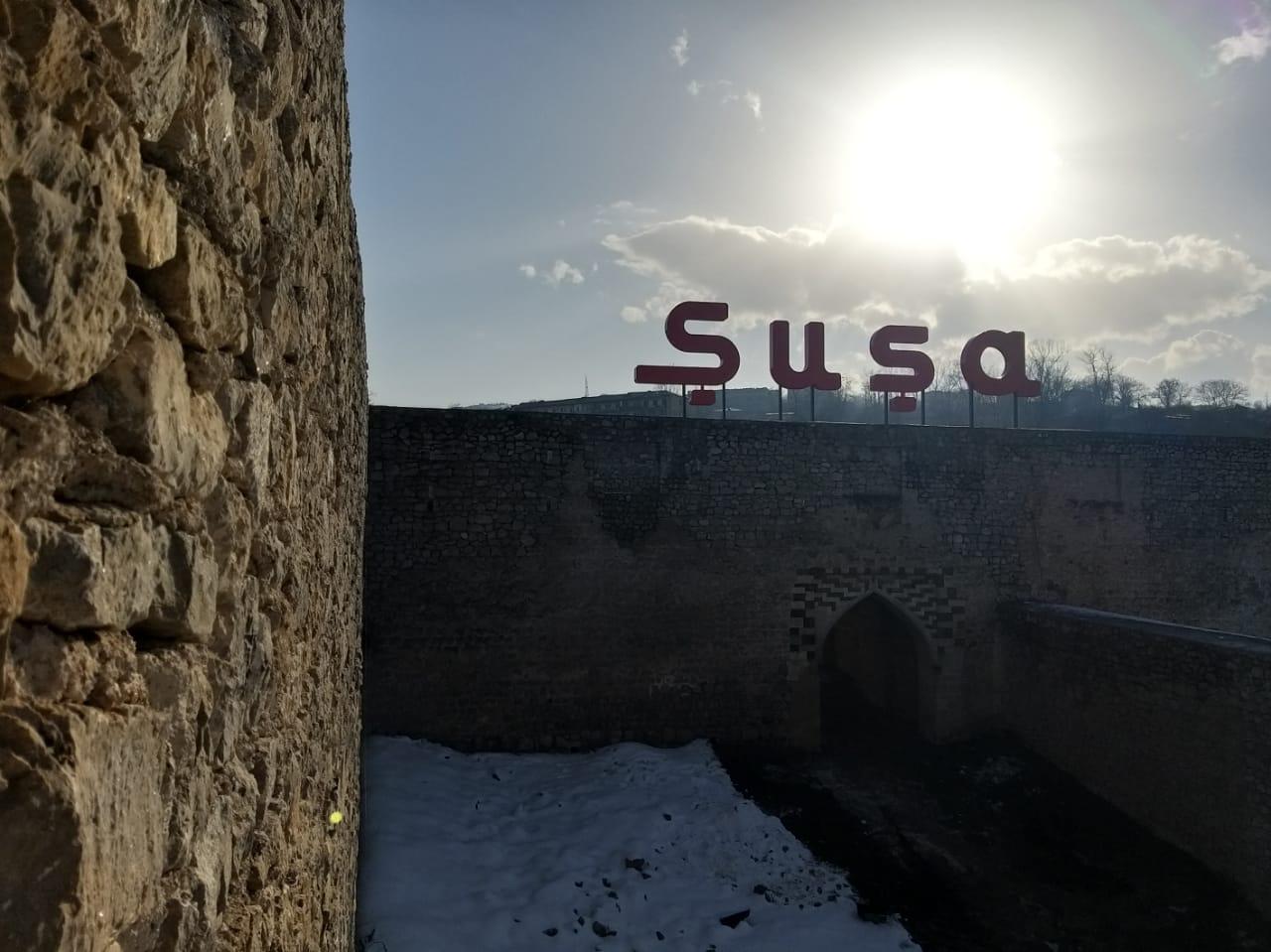
The first stage of the Shusha Fortress Restoration Project has been completed
The inscription "Shusha" has been placed on the Fortress Wall again.
Under the leadership of the Commander-in-Chief of the Armed Forces of the Republic of Azerbaijan, Mr. Ilham Aliyev, our brave army liberated our occupied lands in response to the Armenian military aggression, including the city of Shusha, the crown of Karabakh. According to the President's instructions, the State Committee for Urban Planning and Architecture has started the necessary planning and design work to restore and reconstruct Shusha, a city of special historical, cultural, and strategic importance in Azerbaijan, to revive the city and ensure its future development.
One of the main priorities of the master plan to be prepared by Shusha, which was declared the cultural capital of our country by the President of the Republic of Azerbaijan, is to preserve the city's rich historical and architectural heritage and centuries-old historical image. One of the important projects organized by the State Committee for Urban Planning and Architecture since the beginning of the year in cooperation with relevant agencies, local and foreign experts is the project for the restoration and conservation of the Fortress Walls of Shusha.
The first stage of this project - the conservation of the Ganja Gate, an important historical and cultural monument of Shusha in the XVIII century, and the walls of the fortress, which were destroyed and significantly damaged as a result of the occupation, have been successfully restored and preserved around Ganja Gate.
The head of “Atelier Erich Pummer GmbH” Erix Pumer, a world-renowned Austrian restoration company was involved by the Committee as a consultant to the Shusha Fortress Walls and Ganja Gate Restoration Project who implemented the restoration and conservation of Maiden's Tower, Mohammad Mosque and a number of other monuments of world and national importance in Azerbaijan since 2010. The restoration and conservation project is being implemented by the local “Conco” CJSC, which specializes in this field.
The work was carried out using appropriate technologies and materials to restore the original appearance of the monument in accordance with the archive materials.
Also, in preparation for the next phase of the project, using modern technologies to create a three-dimensional (3D) model of the walls of Shusha Fortress, a laser scanner was installed and examined, which allows the design and restoration process to be more efficient and accurate.
In the first stage of the restoration work, the stones of the fortress walls and Ganja Gate, distinguished by high architectural features, were cleaned of foreign cement-sand plaster applied in recent years, and the seams of the stones were filled with lime-sand solution in accordance with international conservation standards. The upper part of the outer arch of the door, as well as four damaged parts of the fortress walls, the destroyed side of the buttress, and 9 rifle butts intended for defense were restored in the facade of the fortress walls. At the same time, the walls of the basement under the guard tower and the auxiliary room were cleaned of cement-sand plaster and filled with lime-sand mortar, the upper edge of the wall between the two guard towers was leveled and foreign inscriptions were removed. Foreign metal elements existing in the outer and inner yards of the historical monument were also dismantled, part of the soldier's road was cleaned and restored.
At the same time, the famous inscription "Shusha", which once existed on the walls of the fortress of the city of Shusha but was demolished by the Armenian armed forces during the occupation, has been restored. For this purpose, the specialists of Baku State Design Institute, subordinated to the Committee, designed the light metal structure, and installed the inscription "Shusha" made of aluminum on the historical site without any danger or damage to the walls of the Fortress in its historical site.